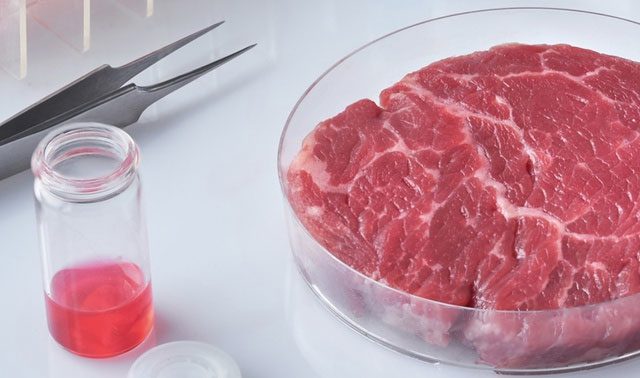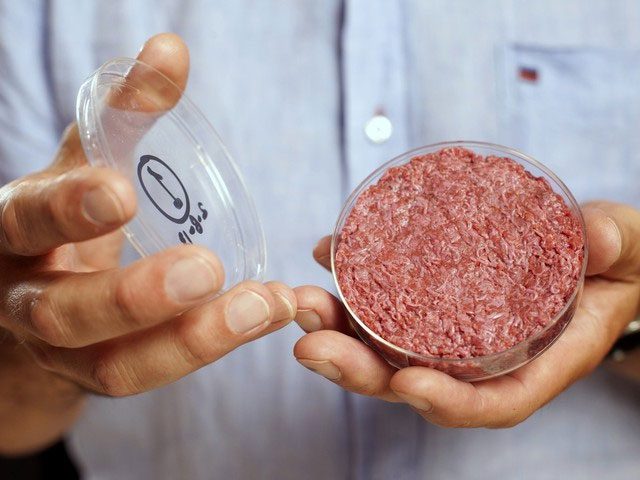This story not only relates to technological breakthroughs but also influences public interest in food safety and sustainable development.
The Past and Present of Cultured Meat
The story of cultured meat dates back to the 1970s when scientists began combining soybean protein, wheat gluten, and other plant proteins to create the first plant-based meat alternatives. Although the taste and texture of these products did not match real meat, they sparked interest in alternative meats.
As concerns about animal welfare and environmental issues continued to rise, scientists sought a solution closer to real meat. This led to the emergence of cell culture technology. Cell culturing is a method of producing meat products by sampling muscle cells from animals and cultivating them in a laboratory. The development of this technology has brought a significant breakthrough to the cultured meat industry.

Cultured meat has the potential to provide significant environmental benefits. Traditional livestock farming provides ample meat but also places considerable pressure on the environment. Statistics show that greenhouse gas emissions from livestock account for 14.5% of total emissions, exceeding global transport emissions.
The cell culturing process involves isolating animal stem cells and placing them in a nutrient solution for cultivation. Stem cells can quickly regenerate and transform into muscle cells. During the cultivation process, scientists simulate muscle development by controlling environmental factors such as temperature, oxygen concentration, and nutrients. After several weeks of cultivation, the stem cells gradually form muscle fibers and fat tissues, ultimately achieving a quality similar to real meat.
Cell Culturing and Gene Editing: A Breakthrough for Cultured Meat
Cell culturing technology is one of the core technologies for cultured meat. It works by extracting cells from animals, culturing and multiplying them in a laboratory, ultimately creating tissue that resembles real meat. The cells used can be obtained from muscle, fat, or other tissues of animals. During the culturing process, the cells are regulated by providing nutrients and appropriate environmental conditions, allowing them to grow rapidly and form meat tissue. Through this cell culturing method, scientists can produce high-quality cultured meat on a large scale, providing a sustainable alternative to traditional meat.

The production of cultured meat does not require vast pasturelands or large amounts of water resources, nor does it generate significant waste and pollutants, thus potentially reducing carbon emissions and preventing water resource abuse. Additionally, producing cultured meat requires less land area and can help avoid large-scale deforestation and ecological damage.
However, cell culturing technology alone is not enough to achieve a breakthrough in cultured meat. The advent of gene editing technology provides greater possibilities for the development of cultured meat. Through gene editing technology, scientists can directly modify the genetic makeup of cells to achieve improvements. They can accurately control key characteristics such as muscle cell growth rate, fat content, and flavor, making cultured meat more similar to real meat.
Moreover, gene editing technology can enhance the nutritional value of meat, making it rich in essential nutrients such as protein, vitamins, and minerals. In this way, people can enjoy delicious flavors while also obtaining balanced nutrition.

Excessive consumption of red and processed meats is considered one of the key factors leading to chronic diseases. In contrast, cultured meat based on cell culturing technology or plant proteins contains no cholesterol and saturated fats, and is rich in fiber, vitamins, and minerals. Therefore, moderate consumption of cultured meat can effectively reduce the risk of chronic diseases and enhance human health.
Breakthroughs in cultured meat are crucial for addressing many challenges faced by modern meat production.
- First, the process of producing cultured meat has much less environmental impact compared to traditional livestock farming. Traditional farming requires large amounts of land, water, and feed, while also producing significant greenhouse gas emissions and waste. The production of cultured meat reduces the demand for these resources, thereby alleviating environmental pressure.
- Second, promoting cultured meat can provide more food options and help ease the pressure of global meat demand. Nowadays, as the global population continues to grow, the demand for meat is increasing, and traditional livestock farming will gradually struggle to meet that demand. Therefore, the breakthrough of cultured meat offers a feasible solution to address food security and food supply shortages.

Additives such as antibiotics and hormones are not used in the production of cultured meat, allowing it to avoid the common issue of drug residues found in traditional livestock farming and ensuring food safety.
Although cultured meat offers many potential benefits, it still faces certain challenges in terms of promotion and practical application.
- The first issue is cost; currently, the production cost of cultured meat is relatively high, making it more expensive than traditional meat. Therefore, the widespread adoption of cultured meat still requires further technological innovation and cost reduction.
- The second issue is acceptance; some consumers are skeptical about the taste and nutritional value of cultured meat, resulting in low acceptance. Therefore, scientists need to intensify research and development efforts to improve the texture and flavor of cultured meat while increasing its authenticity and acceptability. Additionally, public awareness and education campaigns should be strengthened to enhance consumer confidence in cultured meat.
Producing cultured meat from human waste


















































